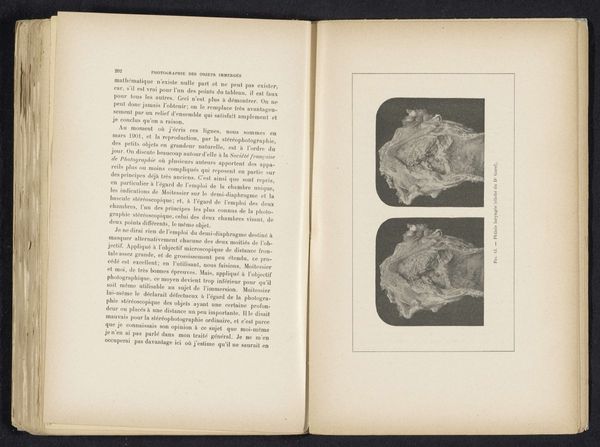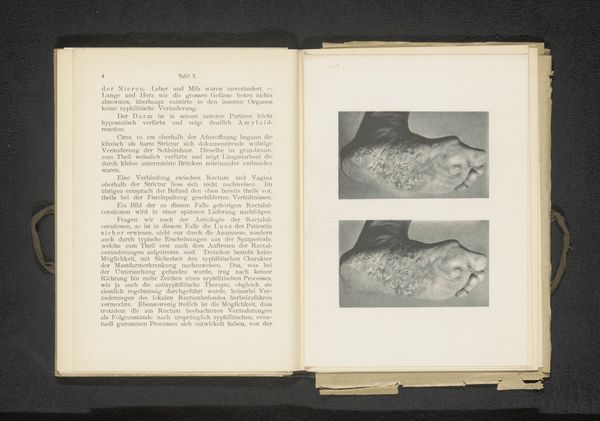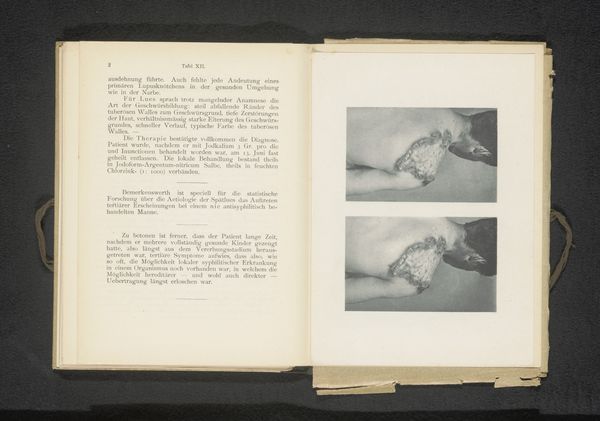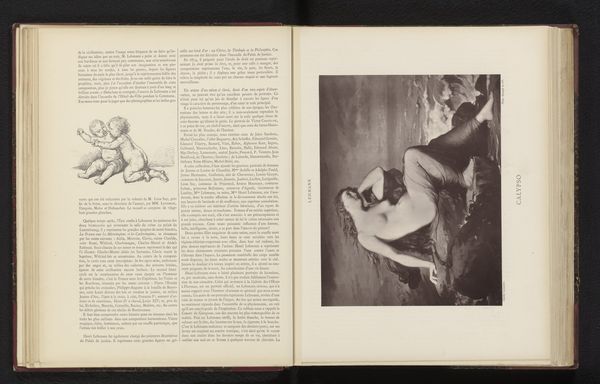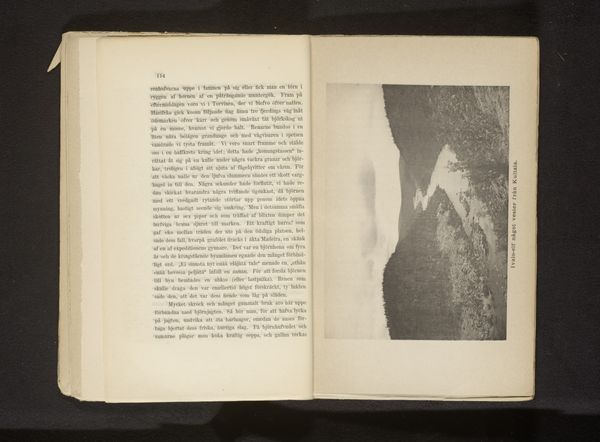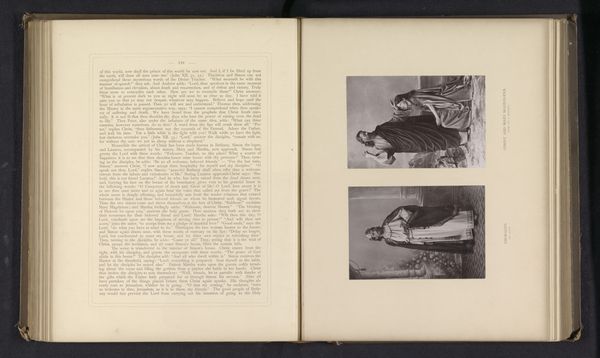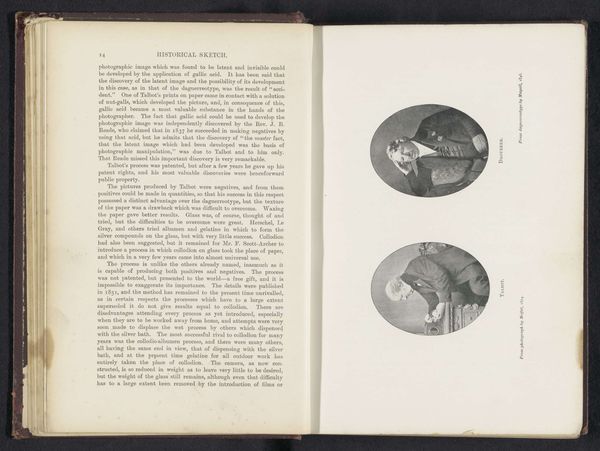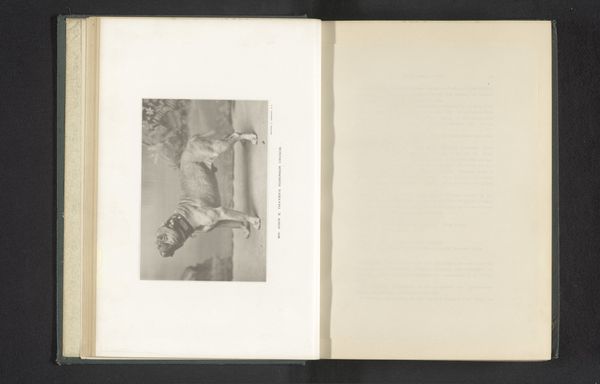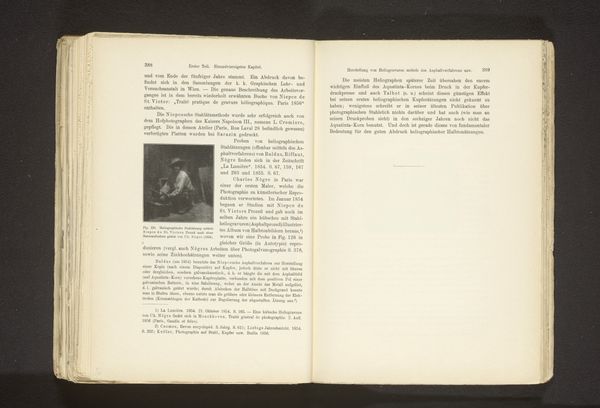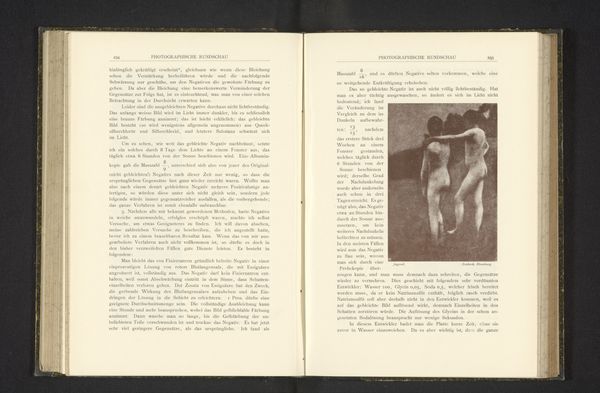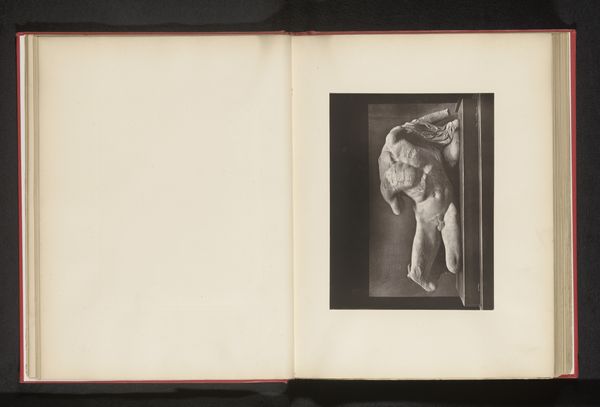
Twee aanblikken van een vrouw met symptomen van Pemphigus door Syringomyelie before 1894
0:00
0:00
print, photography, gelatin-silver-print
# print
#
photography
#
gelatin-silver-print
#
nude
#
realism
Dimensions: height 175 mm, width 126 mm
Copyright: Rijks Museum: Open Domain
Curator: This arresting gelatin silver print offers a sobering glimpse into medical history. The artwork, titled "Twee aanblikken van een vrouw met symptomen van Pemphigus door Syringomyelie," translates to "Two views of a woman with symptoms of Pemphigus due to Syringomyelia" was captured before 1894 by Albert Ludwig Sigesmund Neisser. Editor: My immediate response is one of disquiet. The grayscale and the woman's exposed body evoke a sense of vulnerability and clinical detachment. The careful posing contrasts sharply with the disturbing lesions covering her skin, creating a palpable tension. Curator: Indeed, Neisser's work invites a deep exploration into the symbology of illness. The stark nudity and the clinical setting signify objectivity. However, by framing the lesions with care and the two distinct yet identical positions, Neisser subtly highlights the female form, disrupted, marked by the devastating effects of disease. The open book format itself becomes a symbol of accessible, yet deeply complex, medical knowledge. Editor: I find the composition very striking. Neisser arranges the woman and the stark white fabric to accentuate a clear binary contrast, to allow a detailed assessment of textures against neutral expanses. Observe the light playing on the healthy and diseased parts of her skin. The images work on different registers simultaneously. The texture becomes an allegory for internal imbalance and disintegration. Curator: Precisely. The visual impact underscores a sense of fragmentation. I read the images as conveying that beyond just representing a medical case, there is also a poignant human element present in Neisser’s documentation: both his patient’s physical suffering and a symbol for a societal detachment from individuals afflicted by such conditions. Editor: Ultimately, engaging with a medical record as an aesthetic artwork challenges us to contemplate the fragile line between representation and reality, objectivity, and our innate, inescapable humanity. Curator: An insightful reminder that the act of viewing, even in the scientific realm, is never entirely devoid of feeling or interpretive perspective.
Comments
No comments
Be the first to comment and join the conversation on the ultimate creative platform.
